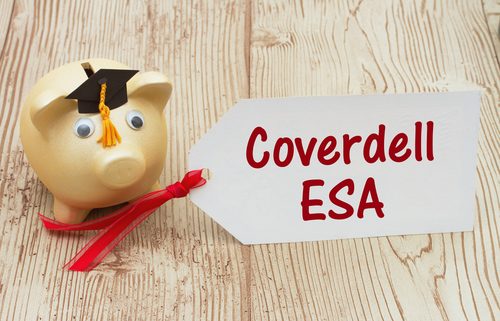How to Contribute to a Self-Directed CESA Even if You Make Too Much Money
The Coverdell Education Savings Account (CESA) is a powerful tool for setting aside money for your children’s education on a tax-advantaged basis. Contributions are not deductible. But they compound tax-free, as long as the assets remain in the account. And distributions for qualified educational expenses are tax-free as well.
Many people we speak to mistakenly believe that they cannot take advantage of a Self-Directed CESA because they make too much money. For individuals, there’s an adjusted gross income cap of $110,000 for singles and $220,000 for married couples. If your AGI is greater than these numbers, you can’t make a direct individual contribution to a Self-Directed CESA.
But that income cap is only applicable to individual contributions. There is no income cap for organizations like corporations and trusts. They can contribute the full allowable $2,000 for any eligible beneficiary.
So, if you have a trust established for a minor, and you want to shelter college assets from income taxes on trusts, you can move up to $2,000 per year per beneficiary into a separate Self-Directed CESA established for each beneficiary.
Information for Business Owners and Trustees
If you own and operate your own corporation, you can also contribute up to $2,000 per beneficiary (subject to an annual $2,000 cap for each beneficiary from all contribution sources). You can do this even if your household is over the annual cap for adjusted gross income that normally applies.
Qualified expenses are not limited to college expenses. You can use Coverdell accounts to pay for K-12 expenses, as well.
In this respect, Coverdells are similar to Section 529 plans. But Coverdell plans have two key advantages over Section 529 plans: First, they support a much wider variety of investment options. With a Section 529 plan, you are limited to the investment options selected for you by the state. A Coverdell account allows you to choose nearly any investment you like, including the same investments allowable in Self-Directed IRA accounts.
In many cases, fees are lower, as well – especially with larger accounts. American IRA, LLC allows you to select a flat-fee pricing structure, rather than an expense ratio. If you are just letting your savings grow and not making many transactions, this can be a far more efficient pricing structure.
Contribution Deadline
You have until April 15th to contribute for the prior calendar year. So, if you file early, and you have a tax return coming and you get the check in time, a Self-Directed CESA can be a great way to put that money to work!
The total contribution from all sources for any given beneficiary in a given year is capped at $2,000.
Self-Directed CESAs
Coverdell contributions can only be made in cash. But once the cash is in the account, you can invest them in nearly anything you like: Stocks, funds, bonds, closely-held corporations, partnerships, LLCs, precious metals, tax liens and certificates – or nearly anything else you believe will best serve your investment objectives and time horizon.
Opening an account with American IRA, LLC will enable you to access all of these alternative asset classes. This may help you diversify your overall investment portfolio, reducing potential risk, increasing returns, or both.
You can read the technical tax rules concerning Coverdell ESA in IRS Publication 970 – Tax Benefits for Education.
Interested in learning more about Self-Directed IRAs? Contact American IRA, LLC at 866-7500-IRA (472) for a free consultation. Download our free guides or visit us online at www.AmericanIRA.com.





